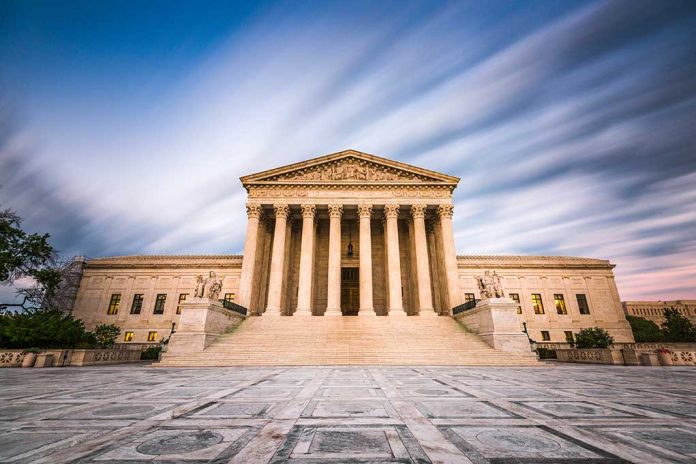
Senator Joe Manchin proposes a constitutional amendment for 18-year Supreme Court justice term limits, aiming to restore public trust in the nation’s highest court.
At a Glance
- Manchin and Welch propose 18-year term limits for future Supreme Court justices
- Current justices would be exempt and could serve for life
- Amendment aims to create regular vacancies and maintain nine justices
- Proposal seeks to reduce political battles and restore public confidence
- Constitutional amendment faces significant hurdles for passage
Manchin’s Proposal: A New Era for the Supreme Court
In a bold move to reshape the highest court in the land, Senator Joe Manchin, an independent from West Virginia, has introduced a constitutional amendment proposing 18-year term limits for Supreme Court justices. The resolution, co-sponsored by Democratic Senator Peter Welch of Vermont, aims to address growing concerns about the politicization of the court and declining public trust in the institution.
The proposed amendment would maintain the current nine-justice composition established by the Judiciary Act of 1869. It introduces a system where new terms would begin every two years, creating a predictable cycle of appointments. Importantly, the amendment would not affect current justices, who would retain their lifetime appointments.
“I’m proud to introduce this legislation with Senator Welch that would establish 18-year term limits for Justices of the United States Supreme Court. The current lifetime appointment structure is broken and fuels polarizing confirmation battles and political posturing that has eroded public confidence in the highest court in our land,” said Senator Manchin.
I’m proud to introduce legislation with @SenPeterWelch that would establish 18-year term limits for Justices of the United States Supreme Court. MORE: https://t.co/fSzh606l4a
— Senator Joe Manchin (@Sen_JoeManchin) December 9, 2024
Addressing a “Broken” System
Manchin argues that the current lifetime appointment structure is fundamentally flawed, contributing to increasingly partisan confirmation battles and eroding public confidence in the Supreme Court. Recent polls support this view, with the Annenberg Public Policy Center reporting a significant 22-point drop in confidence in the court from 2019 to 2022.
The amendment is presented as a bipartisan effort to reduce political gamesmanship and restore trust in the judicial system. It comes in response to growing public demand for reform, with 68% of Americans supporting term limits for justices according to recent surveys.
Potential Impact and Challenges
If implemented, the amendment would create a more predictable appointment process, potentially reducing the intense political battles that have characterized recent confirmations. It aims to ensure a regular infusion of new perspectives on the court while maintaining its stability and independence.
“Taking action to restore public trust in our nation’s most powerful Court is as urgent as it is necessary. Setting term limits for Supreme Court Justices will cut down on political gamesmanship, and is commonsense reform supported by a majority of Americans,” said Welch.
However, the path to ratification for a constitutional amendment is notoriously difficult, requiring two-thirds approval in both houses of Congress and ratification by three-fourths of state legislatures. This high bar means that despite potential bipartisan support, the proposal faces significant hurdles.
A Call for Bipartisan Support
Manchin, who did not seek reelection this past cycle, sees this proposal as a crucial step towards restoring faith in the judicial system. He has called on colleagues from both parties to support the legislation, framing it as a necessary reform to address the perceived decline in the court’s impartiality and public standing.
As the debate over Supreme Court reform continues, Manchin’s proposal represents a significant attempt to address long-standing concerns about the court’s structure and function. Whether it gains the necessary support to become a reality remains to be seen, but it has undoubtedly reignited the conversation about the future of America’s highest court.






















